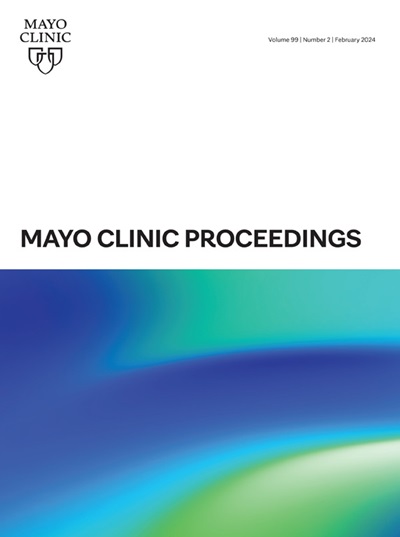Intracranial Aneurysms in Autosomal Dominant Polycystic Kidney Disease: A Practical Approach to Screening and Management
IF 6.9
2区 医学
Q1 MEDICINE, GENERAL & INTERNAL
引用次数: 0
Abstract
Autosomal dominant polycystic kidney disease (ADPKD), the most prevalent genetic kidney disorder, is characterized by diffuse kidney cysts, hypertension, and progressive kidney function decline, often leading to kidney failure by the age of 60 years. Compared with the general population, patients with ADPKD have an increased risk for development of saccular intracranial aneurysms (IAs), which can lead to intracranial bleeding and result in significant disability and mortality. Of both modifiable and nonmodifiable risk factors, the most significant is a family history of IAs or aneurysm rupture. Other contributing factors include hypertension, cigarette smoking, age, and sex. Most IAs currently detected during screening tests are small and located in the anterior circulation. Intracranial aneurysms can be manifested with thunderclap headache, which may be indicative of subarachnoid hemorrhage. Less commonly, IAs cause symptoms related to mass effect with focal neurologic deficits. Subarachnoid hemorrhage is particularly concerning, given its high case-fatality rate, which remains around 35% despite advances in neurologic care. Therefore, control of risk factors, early detection, and treatment when indicated are important to prevent adverse outcomes. Screening for IAs in ADPKD remains controversial and can be approached either universally (screening of all ADPKD patients) or selectively (screening of high-risk patients). The preferred imaging modality is brain magnetic resonance angiography without contrast enhancement or alternatively computed tomography angiography. This review provides a practical guide for medical teams managing patients with ADPKD, detailing the characteristics of IAs and their associated symptoms. It presents an algorithm for risk assessment and screening along with recommendations for treatment and follow-up care.
常染色体显性多囊肾病颅内动脉瘤:一种实用的筛查和治疗方法。
常染色体显性多囊肾病(ADPKD)是最常见的遗传性肾脏疾病,其特征是弥漫性肾囊肿、高血压和进行性肾功能下降,通常在60岁时导致肾衰竭。与一般人群相比,ADPKD患者发生囊状颅内动脉瘤(IAs)的风险增加,可导致颅内出血,并导致严重的残疾和死亡。在可改变和不可改变的危险因素中,最重要的是IAs或动脉瘤破裂的家族史。其他影响因素包括高血压、吸烟、年龄和性别。目前在筛选试验中发现的大多数IAs都很小,位于前循环。颅内动脉瘤可表现为雷击性头痛,可能提示蛛网膜下腔出血。不太常见的是,IAs引起与局灶性神经功能缺损的肿块效应相关的症状。鉴于蛛网膜下腔出血的高病死率,尤其令人担忧,尽管神经病学护理取得进展,但其病死率仍在35%左右。因此,控制危险因素、早期发现和适时治疗对于预防不良后果非常重要。在ADPKD中筛查IAs仍然存在争议,可以普遍(筛查所有ADPKD患者)或选择性(筛查高危患者)进行。首选的成像方式是无增强的脑磁共振血管造影或计算机断层血管造影。本综述为管理ADPKD患者的医疗团队提供了实用指南,详细介绍了IAs的特征及其相关症状。它提出了风险评估和筛查的算法以及治疗和后续护理的建议。
本文章由计算机程序翻译,如有差异,请以英文原文为准。
求助全文
约1分钟内获得全文
求助全文
来源期刊

Mayo Clinic proceedings
医学-医学:内科
CiteScore
16.80
自引率
1.10%
发文量
383
审稿时长
37 days
期刊介绍:
Mayo Clinic Proceedings is a premier peer-reviewed clinical journal in general medicine. Sponsored by Mayo Clinic, it is one of the most widely read and highly cited scientific publications for physicians. Since 1926, Mayo Clinic Proceedings has continuously published articles that focus on clinical medicine and support the professional and educational needs of its readers. The journal welcomes submissions from authors worldwide and includes Nobel-prize-winning research in its content. With an Impact Factor of 8.9, Mayo Clinic Proceedings is ranked #20 out of 167 journals in the Medicine, General and Internal category, placing it in the top 12% of these journals. It invites manuscripts on clinical and laboratory medicine, health care policy and economics, medical education and ethics, and related topics.
 求助内容:
求助内容: 应助结果提醒方式:
应助结果提醒方式:


